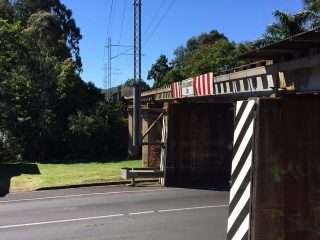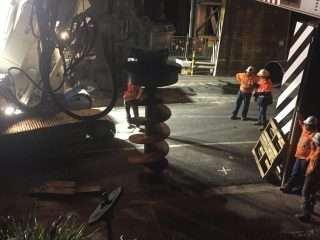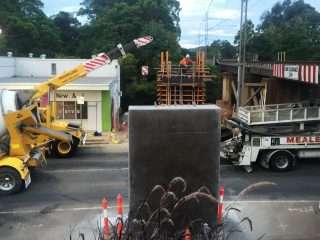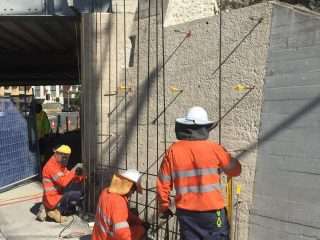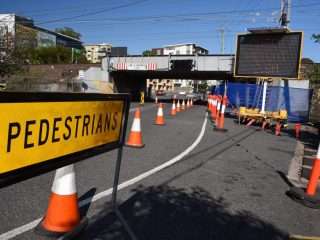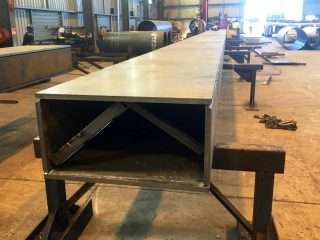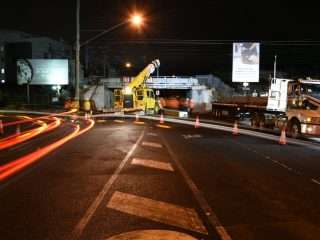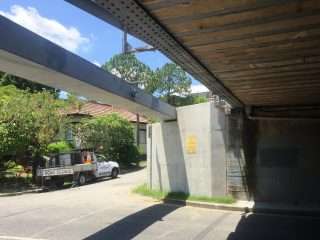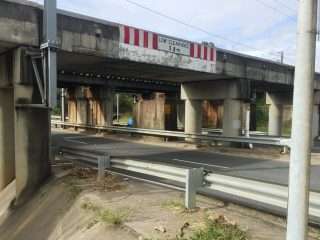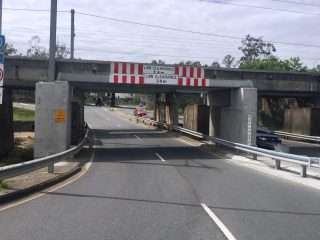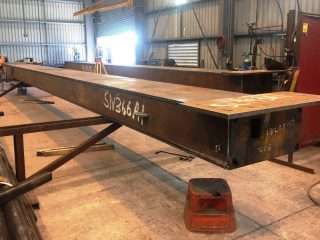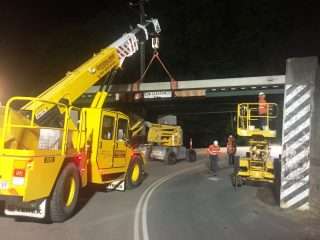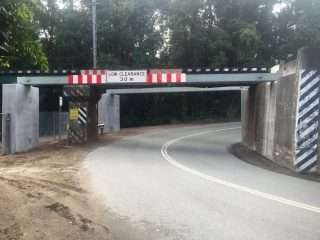Projects
Bridge Strike Protection Beams – Stage 2
Contract Value: $3.2M Total (Indooroopilly – $0.48M, Nambour – $1.3M, Woombye – $0.98M, Moorooka – $0.43M)
The Bridge Strike Protection Beams Project consisted of the installation of steel beams on each approach of low clearance QR rail bridges at four locations. The purpose of the project was to provide protection to the existing rail bridge by installing a physical barrier in front of the bridges such that any over height vehicle would not cause damage to the bridge if attempting to travel under it. The contract included works at 4 separate sites; Indooroopilly, Nambour, Woombye and Moorooka. Each site was treated as a separable portion under the contract. Each site’s design was unique and required alternate construction approaches.
The basis of each of the projects was the fabrication and installation of structural steel beams, relocation of services, installation of bored piles, traditional FRP for headstocks and wingwalls, steel fixing and concrete works, civil works such as footpaths and installation of conduits and pits. All works carried out within an existing road and rail corridor (adjacent to grade separated crossings) and required significant traffic management planning. Installation of the protection beams was typically undertaken at night under road closure with community notification program set out in advance.
Key features of these projects include:
- Indooroopilly – Involved modification and extension of existing abutment wall to provide an attachment point for the beam. Beams were installed using a franna crane over a night shift with a full road detour in place. Beams were 16m long and weighed 8t each. New beams sit 20mm lower than the existing bridge ensuring that it can not be hit by overheight vehicles.
- Woombye – Involved construction of 2 new concrete blade walls, an extension of the existing bridge abutment and modifications to the abutment shelf to support the new steel box beams. Each blade wall was supported on reinforced concrete pile caps, founded by 2 x 1200 diameter bored piles. The project was required to be constructed without rail closure or de-energization of the OHLE and maintaining at least one operational road lane during the day. The steel protection beams were installed at night with a franna crane under full road closure with detour in place. New beams were 130mm lower than bridge, ensuring minimal damage to the bridge and additional advanced warning signs were installed on each of the bridge approaches.
- Nambour – Involved the construction of 4 new concrete blade walls to support the steel box beams. Each wall was constructed on a reinforced concrete pile cap supported by 2 x 1050 diameter pored piles. Two blade walls were built directly within the road shoulder. The majority of works had to be completed over a night shift with a full road closure in place. All plant and equipment had to be removed at the end of each night shift. Works had to be completed with no impact to rail, including closures or de-energization of the OHLE. Beams were 170mm lower than existing bridge and new kerb and channel was constructed around the blade piers in roadways, protecting them from road users.
- Moorooka – Involved the installation of one protection beam at one of the approaches. To support, the existing pier structures were encapsulated and extended to provide a support platform for the beam to sit on. One of the piers had a mast structure for the QR rail Overhead Power lines which had to be encapsulated also. This involved significant co-ordination with QR regarding working with and around their live asset. The works were mostly completed as night works under traffic control. New guardrails were installed around the structures to protect them from road traffic.
- All contracts were delivered on time
- Height limiting devices were used on cranes during beam erection to ensure electrical exclusion zones around power lines and OHLE were not breached.
- Project team worked with QR communications team to ensure appropriate notifications were provided to the local community and stakeholders. No community or stakeholder complaints were reported


